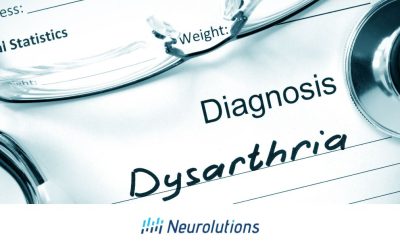Driving and community mobility may be one of the most vital occupations because of the influence it has on health and well-being. (1) Driving helps us get to and from places that support our daily life activities, such as appointments, stores, and work, social and leisure activities from adolescence to older adulthood, being able to drive corresponds with autonomy and is an indicator of livelihood. In other words, independence can be linked to one’s car.
Sadly, a stroke – even a “small” one – may limit the ability to drive safely and therefore pose a threat to driving privileges. Additionally, the consequence of restrictions on driving has the power to place anxiety, stress, and transportation burden on family members.
However, here are a couple of pieces of GOOD NEWS related to recovery after stroke and driving:
- If you have had a stroke, you still may be able to drive again. Studies have found that 30-66% of individuals return to driving after a stroke. (2)
- A growing number of services and resources are available to help stroke survivors, their healthcare providers, and driving-related agencies join forces to promote the occupation of driving and community mobility.
This broad overview provides information related to questions about a return to driving, or potentially cessation of driving, after a stroke.
Stroke And Its Impact On Driving
It is important to understand how the aftermath of a stroke presents changes in health status and affects the ability to drive safely.
There are several stroke-related conditions that affect driving fitness, including, but not limited to:
- Range of motion limitations
- Weakness
- Motor and coordination difficulties
- Limitations with mobility in and out of the vehicle
- Sensation loss
- Visual perceptual skills
- Visual changes
- Reduced attention, concentration, and memory
- Confusion, disorientation, or judgment problems
- Difficulty reading or understanding signs and directions
- Mental and emotional changes
- Mental or physical fatigue
- Presence of pain
- Language related impairments
Because no two strokes are the same, symptoms vary in severity between individuals.
For some survivors of stroke, cognition is the primary concern. Safe driving relies heavily on intact cognitive skills. Therefore, the individual would be viewed as “high risk” to return to driving if cognition is impaired.
In other cases, the individual may not have any trouble with cognition. Instead, they may have lasting limitations with strength and motor skills. It may be possible for this individual to return to driving if they are open to receiving support and training for adaptive controls on their vehicle.
The trajectory of recovery after a stroke is also unique for each stroke survivor, so this is relevant to consider when projecting timelines for returning to driving. Mental and physical problems after a stroke have the potential to improve over time and are not always permanent. Traditional rehabilitation may accelerate recovery and is often recommended to remediate or compensate for impairments before getting behind the wheel.
It may be apparent that driving is not safe or possible. The individual may have to permanently discontinue driving. Careful planning for transitioning to other community mobility options while upholding the individual’s dignity and encouraging engagement outside of the household is important.
Driving After Stroke: What Are Your Options?
Many individuals wonder, “Will I have to stop driving after my stroke?”
If your stroke caused a change in your physical or mental condition, it has the potential to affect your ability to drive.
If your physician has indicated that you should not be driving, it is important to not get behind the wheel- even if you feel you are capable. Driving is a highly complex task with a lot at stake.
A broad overview of possible outcomes that may occur if you had a stroke and you previously drove a motor vehicle:
Resume Driving
- Based on a combination of judgment, objective information, and state laws, your physician may clear you for driving if the risk is deemed to be low.
- Always wait for this clearance before getting behind the wheel.
- Talk to your doctor about options for “easing into” driving again (i.e. start with short trips to familiar places, avoid driving in bad weather, travel with an individual that supports you and makes you feel comfortable)
Hold Driving
- Seek treatment from specialists, addressing known medical or functional problems that compromise driving
- Reassess driving risk, as appropriate
- You may require a comprehensive driving evaluation, which involves both a clinical evaluation and an in-vehicle road assessment, if appropriate.
Stop Driving
- If the risk is high and the potential for safely returning behind the wheel is low, you may need to permanently discontinue driving.
- Your physician will guide you through the proper steps to take with your state’s authority on driving and transportation.
What Are The Rules And Laws About Driving After Stroke?
In the US, state authorities on driving follow National Highway Traffic Safety Administration’s (NHTSA) Driving Fitness Medical Guidelines. Each Department of State has its own laws centered around driving if a condition (i.e. stroke) creates functional limitations, conditions that involve a possible loss of consciousness, and use of substances judged to be incompatible with safe driving.
Physicians and optometrists are not required to report an individual’s medical condition to the Secretary of State, but in some cases, they may elect to notify authorities. Each state has its own process for managing the reporting of unsafe drivers as well as the driver reexamination processes.
Consult guidance from an advisor in your state so you are familiar with your rights, laws, and protocols. They will also be able to help provide resources to support you on the particular pathway you are on related to driving and the promotion of safe community mobility.
The Right Steps To Take Before Returning To Driving
Resuming driving after a stroke may take some time. It also requires a considerate amount of thought and coordination with several parties involved (i.e. the survivor of the stroke, healthcare providers, and outside agencies). This is to ensure the decision to resume is made with as much information as possible to understand driving risk.
If returning to driving is a goal of yours after your stroke, follow these steps to make sure you are being responsible for the welfare of you as well as those around you:
Wait Until You are Cleared
Driving before you are ready is a risk that you cannot afford to take. Give yourself time for your brain to heal and for your body to restore mental or physical abilities that suffered because of the stroke. During the waiting period, seek therapy from rehabilitation specialists to help you improve skills that may have correlations to driving.
Talk to your Doctor
Healthcare providers and physicians are important partners for guiding steps to take before returning to driving after a stroke. It is the responsibility of the physician to increase awareness of how changes in your health after a stroke may impact your safe driving fitness. There are occasions in which multiple physicians must collaborate to review the individual’s medical history, strengths, limitations, and safety considerations before providing clearance.
If you have been recently discharged from the hospital after a stroke, it is imperative to read discharge instructions related to driving. Look for a statement such as, “DO NOT DRIVE until you have been cleared by your physician.”
Although it can be an unpleasant conversation to have with your healthcare provider, try to be open to receiving education on the following steps to take.
Check with Licensing Authorities in your State
Driving is a privilege that carries civil responsibilities. It is your responsibility to understand and follow driving laws under your Department of State.
Consider a Comprehensive Driving Evaluation, if needed
If your physician provides orders for you to get started in the driving evaluation process, anticipate that the driving specialist will take you through these “gold standard” steps. (2). Driving Rehabilitation Specialists perform the evaluation and make objective decisions about how the process will look based on best practice guidelines and evidence.
Note that all of the steps may not apply to your needs. For example: if you do not have a wheelchair/powerchair, you will not require evaluation and intervention for one.
Step 1: Clinical Evaluation
Step 2: Vehicle and Wheelchair evaluation
Step 3: Adaptive Equipment Evaluation
Step 4: In-traffic Evaluation in a Vehicle
Step 5: Intervention: Therapy or Training
Step 6: Equipment Prescription
Step 7: Final Vehicle Fitting and Inspection
Conclusion
Working towards the goal of promoting safe mobility in the lives of stroke survivors is critical. When it comes to driving, it is also necessary to consider the “big picture” of the health, well-being, and safety in our society. It is important not to hurt yourself or others, as driving is the most complex activity that anyone can participate in from a day-to-day activity due to the required skills.
Stroke can have an impact on driving fitness, but support and resources are available to help you on your path.
References
- Adaptive Mobility Services. Course 1: Occupational Therapy for Driving and Community Mobility. Susie Touchinsky.
- Legh-Smith J, Wade DT, Hewer RL. Diving after a stroke. J R Soc Med. 1986;79(4):200–3. Fisk GD, Owsley C, Pulley LV. Driving after stroke: Driving exposure, advice, and evaluations. Arch Phys Med Rehabil. 1997;78(12):1338–45
Resources
Driving Practitioner Directory
Driving Rehabilitation Specialist Resources
Safe Driving for Your Lifetime: Your Road Ahead
Driving when you have had a Stroke
American Stroke Association Information on Driving
United States Department of Transportation




